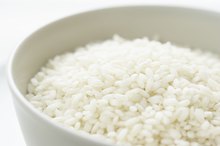What Are Gin Blossoms?
Gin blossoms are an allergic reaction to alcohol that causes the face and neck--and sometimes other areas of the body such as the torso--to become red and warm. This condition is known as alcohol flush reaction or Asian flush reaction because of its high prevalence in the Asian population.
History of Alcohol Flush Reaction
Alcohol flush reaction has been known in the Asian populations for thousands of years, but no one knew what caused it until recently. In 2010, a researcher named Bing Su discovered that alcohol flush reaction has a genetic cause. The allele ADH1B*47 has a mutation that causes alcohol flush reaction, and that mutation developed around the same time as rice was first domesticated and fermented into alcohol. Bing Su theorizes that this reaction is an evolutionary development that has a protective effect against alcoholism, which is borne out by the fact that individuals with alcohol flush reaction have a lower risk of alcoholism.
- Alcohol flush reaction has been known in the Asian populations for thousands of years, but no one knew what caused it until recently.
- Bing Su theorizes that this reaction is an evolutionary development that has a protective effect against alcoholism, which is borne out by the fact that individuals with alcohol flush reaction have a lower risk of alcoholism.
Causes
Allergic Reaction Rash to Alcoholic Drinks
Learn More
Alcohol flush reaction is caused by an allergic reaction to alcohol 1. When you consume alcohol, your body starts a complex process to break it down. First, the alcohol is broken down into acetaldehyde by an enzyme called alcohol dehydrogenase, or ADH. Once that happens, a second enzyme called ADH2 breaks the acetaldehyde into acetic acid, and after that other enzymes break the acetic acid into carbon and water. The deficiency in people with alcohol flush reaction occurs with the ADH2 1. Instead of producing ADH2, a defective enzyme is produced. As a result, instead of being broken down, the acetaldehyde enters the bloodstream, where it causes the characteristic flush reaction.
- Alcohol flush reaction is caused by an allergic reaction to alcohol 1.
- As a result, instead of being broken down, the acetaldehyde enters the bloodstream, where it causes the characteristic flush reaction.
Health Effects
Alcohol flush reaction is not a harmless flush 1. Acetaldehyde, the product of alcohol that is not broken down by the defective enzyme, is a toxic substance. In fact, acetaldehyde is even more toxic than alcohol and is the substance that causes a hangover. For those with alcohol flush reaction, facial flushing, sleepiness, increased heart rate, low blood pressure and dizziness can result from the buildup of acetaldehyde in the system, making them feel very ill even after a small amount of alcohol. Over time, the consumption of alcohol can lead to organ damage and even death.
- Alcohol flush reaction is not a harmless flush 1.
- In fact, acetaldehyde is even more toxic than alcohol and is the substance that causes a hangover.
Treatment
Alcohol Sensitivity Symptoms
Learn More
The best treatment for alcohol flush reaction is not to drink or to cease drinking once symptoms of the flush begin. Some sufferers advocate consuming starchy or sugary foods before drinking because the starch and sugar coat the stomach and keep the symptoms at bay. Others recommend taking products that contain Famotidine, an ingredient found in heartburn relief medications. These remedies no not prevent alcohol flush reaction, as they do not compensate for the defective enzyme, so the best solution remains to abstain from drinking.
- The best treatment for alcohol flush reaction is not to drink or to cease drinking once symptoms of the flush begin.
- Some sufferers advocate consuming starchy or sugary foods before drinking because the starch and sugar coat the stomach and keep the symptoms at bay.
Related Articles
References
- Science Daily: Rice Responsible for Asians' Alcohol Flush Reaction, Research Finds
- Cho Y, Kwak S, Lewis SJ, et al. Exploring the utility of alcohol flushing as an instrumental variable for alcohol intake in Koreans. Sci Rep. 2018;8(1):458. doi:10.1038/s41598-017-18856-z
- National Health Service. Facial Flushing.
- Edenberg HJ, Mcclintick JN. Alcohol Dehydrogenases, Aldehyde Dehydrogenases, and Alcohol Use Disorders: A Critical Review. Alcohol Clin Exp Res. 2018;42(12):2281-2297. doi:10.1111/acer.13904
- Peng Y, Shi H, Qi XB, et al. The ADH1B Arg47His polymorphism in east Asian populations and expansion of rice domestication in history. BMC Evol Biol. 2010;10:15. doi:10.1186/1471-2148-10-15
- Abbas G, Krasna M. Overview of esophageal cancer. Ann Cardiothorac Surg. 2017;6(2):131–136. doi:10.21037/acs.2017.03.03
Writer Bio
Natalie Smith is a technical writing professor specializing in medical writing localization and food writing. Her work has been published in technical journals, on several prominent cooking and nutrition websites, as well as books and conference proceedings. Smith has won two international research awards for her scholarship in intercultural medical writing, and holds a PhD in technical communication and rhetoric.









